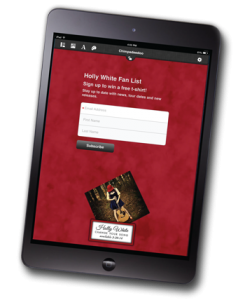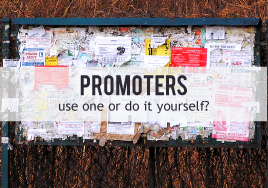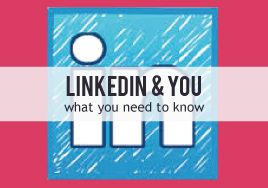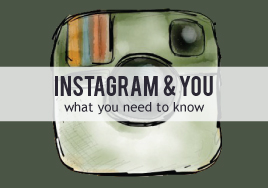How To Make A Music Video
On Your Own For FREE
By
Estimated reading time: 6 minuteswritten by: Gregory Douglass
So many bands and musicians have had success through viral music video outlets like Youtube. The demand for video is only increasing so it’s time for you to get in on the action. Youtube is still the second largest search engine in the world, and in case you forgot, that’s how Justin Bieber was discovered (how could you forget?) You could easily spend thousands of dollars on a sharp looking, professionally-produced music video – but if you’re just getting started, you probably can’t afford that. That’s no excuse for bypassing music videos altogether though. As a musician, you can’t afford not to have them these days, so here are six steps on how to make a music video on your own for free for those of you who are brand new to the world video:
1. Choose your strongest song. Assuming that you’re a recording artist, you probably have a least a handful of brilliant songs already recorded that you can choose from. Be sure to pick your strongest song, but don’t just take your own word for it – get some second opinions! Chances are, your favorite song isn’t necessarily your strongest song – at least not according to everyone else. Ask your fans, friends, and family what they think is your strongest – then do yourself a favor and take their word for it. This should set the stage for more consistent results from the music video you’re about to make. Understand that your music video will be an incredibly powerful promotional vehicle for whatever song you choose, so make it a strong one!
2. Choose your video equipment. Assuming that you already have a laptop, computer, smartphone, tablet, or camera with video capabilities – you’ll have plenty of equipment options to choose from. If you don’t have access to any of these devices, you probably have a friend who would be kind enough to let you borrow something. All of these devices come with some sort of internal camera and video recording capability, so choose whatever works for you. Since you’re making a music video, the audio component of whatever device you choose won’t matter because you’re eventually going to replace the audio with the pre-recorded audio of your strongest song. I use a Canon Vixia consumer camcorder myself – which is HD quality for a reasonable price – but you can use your shiny new iPhone 5, MacBook Pro, or something as affordable and easy to use as a Flip MinoHD Camera.
3. Create your concept. What kind of imagery comes to mind from the song you’ve selected? What kind of music video do you want to create? For example, you can choose to create a more traditional, story-driven music video, or a live performance-style music video. With a story-driven music video, you might consider doing some acting or filming various places, people, things, or circumstances that support your storyline or imagery. Get creative here and make the most out of what you have to work with already. Is there anything just lying around the house that you can incorporate? Include footage of you lip-syncing a performance, lip-syncing a studio recording session, or capture footage your band performing the song. This will also work exclusively for a live performance-style music video, and you’ll be better off lip-syncing to your pre-recorded song verses singing it live for sake of better audio quality.
4. Choose your locations. Keep it simple and stick to 1-3 locations for your music video. They can be anywhere that supports your storyline or imagery – even three different rooms in the same house works. Is your song dark and brooding? Consider darker locations with softer lighting. Is your song happy and inspiring? Consider brighter locations with wide, open spaces. Shooting outside during the day always offers ample lighting, and cloudy days are particularly helpful in regulating the light because clouds act as natural light diffusers – so long as it’s not raining on your video equipment! If you want more indoor lighting regulation, be sure to have some good lighting options on hand – such as strong overhead lights with dimmers or spotlight lamps – and experiment with each lighting source.
5. Shoot your video. Experiment with various camera angles and positions before you start recording full takes. You might discover you have a more visually striking side or angle, and you might discover the same about your location. Once you’re ready to press record, plan to perform or lip-sync to your song 2-4 times, and aim for 2-4 takes for everything you decide to film as a general rule of thumb. This will give you more than one option for every point in the song, just in case you had something between your teeth during the first take. Nothing is more discouraging than putting the time and effort into filming just to realize you have to do it all over again, so always create options! This rule of thumb is particularly helpful when you’re filming yourself because no one will be behind the camera to keep an eye on things while the camera is rolling. Consider various different angles for each take so your options are diverse when it comes time to edit. Different angles might include a wide shot, a waist shot, a close-up shot, and a handheld shot.
6. Edit your video. Editing your own music video can be as much fun as creating a concept and shooting your music video, so don’t be afraid to learn. It’s exciting to bring your footage to life, and it requires more of your own creativity. There are some powerful video editing software options available for premium prices – such as Final Cut and Adobe Premiere – but since we’re talking about making a music video for free, lets take a loot at the freemium alternatives. If you have a computer, you should already have access to free video editing software that is easy to use and simple to figure out on your own. If you’re on a mac for example, you should already have iMovie, and Windows Movie Maker for PC. Youtube even has its own built-in video editing application, though I can’t say I’ve tried it yet. Whatever software you use should have the option to eventually mute or disable the audio from your video footage once you import/upload it into a new project. You might want to keep it enabled until you’re finished editing though, as it will be a necessary point of reference for the song as you extract each clip you want to use to lay over the recording of your song. Once a clip is added to your video timeline and matched up correctly to the appropriate section of your recorded song, you can then disable the video clip’s audio channel. Get creative and play around with all the different takes and angles you’ve captured until you have built a completed music video that you’re happy with, free of charge!
5 Comments
...Keep Reading

























